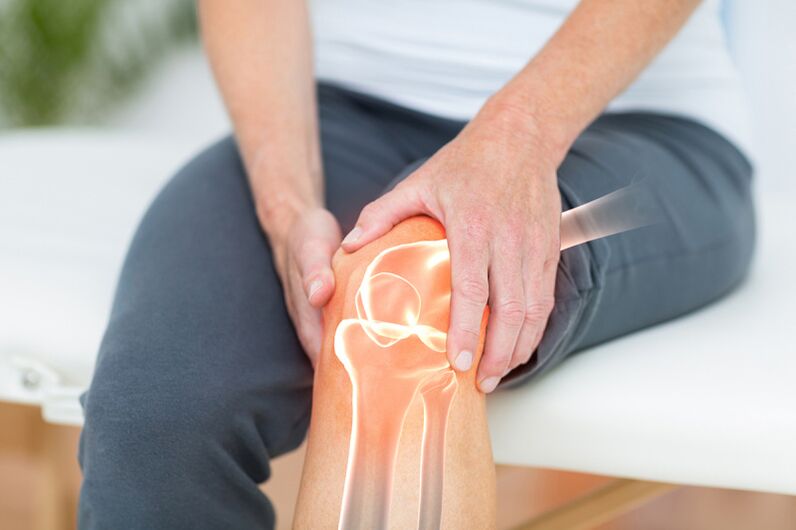
Knee joint disease or knee joint disease is a very common disease. Such diagnoses are most often made in the elderly population, but arthropathy "starts" much earlier, even at age 35-40. Severely symptomatic knee arthropathy seriously disrupts the entire lifestyle, so it is important to consult a doctor and receive timely treatment at the first manifestations of the knee.
Causes of Arthropathy
It can be said that knee joint disease is a disease, on the one hand because of lifestyle, on the other hand is the age.
The immediate (internal) causes of arthropathy are:
- Injuries in the joint area in the past (sports, family and other),
- Inflammatory diseases of the musculoskeletal system (arthritis),
- metabolic disease (diabetes),
- Common orthopaedic defects of the lower extremity, including flat feet and valgus feet, and X-shaped deformities of the legs; these defects can interfere with the proper motion of the knee joint, resulting in deformation and degeneration of the joint tissue.
Factors triggering arthropathy (external, individual):
- overweight, obese,
- female,
- age,
- Constant heavy load (standing work, monotonous movements of the joints during the workday).
Under the influence of external and internal factors, the knee joint begins to degenerate and age, and all its structures are involved in this process: bone, cartilage, synovium, joint capsule, ligaments.
Symptoms of joint disease
The performance of the knee joint is directly related to the stage of arthropathy. The more pathological changes in the joints and adjacent tissues, the more pronounced the symptoms.
- In the initial stages, a person may be disturbed by discomfort, mild pain after physical activity, which will go away on its own.
- Over time (from 1 year to several years), the pain increases and becomes permanent, with limited joint mobility and a characteristic "crunch", "squeak" sound when moving.
- In the final stages of arthropathy, movement is severely restricted, joints are visually deformed, walking is difficult, and severe complications may progress to complete immobility ("joint mice", arthrodesis, etc. ).
Diagnosis of knee joint disease
Detect arthropathy of the knee using available diagnostic methods:
- Ultrasound of the knee allows you to assess the condition of the articular cartilage and bone surfaces, surrounding soft tissues; especially important in the initial stages of arthropathy, as it helps to identify pathological changes before severe symptoms appear;
- Radiography is also one of the main diagnostic methods, but it is not always available, in addition, it is related to the radiation exposure of the body;
- To definitively diagnose or characterize the disease process, MRI, CT, and arthroscopy are also used.
treat arthritis
In arthropathy of the knee, various exposure methods are used:
- drug therapy, including intra-articular administration,
- traction (unloading) therapy,
- Physiotherapy, classic and innovative methods,
- physiotherapy and massage,
- manual therapy,
- Autologous plasma therapy (PRP therapy).
The combination of these methods selected by the doctor can reduce the symptoms of arthropathy, stop the inflammation and degeneration of the joint, and maintain its mobility and range of motion.
initial stage of arthropathy
In the initial stages of the disease, drugs with analgesic and restorative effects (NSAIDs, chondroprotectants, vitamins) are used, which are prescribed by doctors. In addition, various orthopedic devices are used: insoles, insoles, special shoes). Physiotherapy, manual massage, physiotherapy exercise works very well.
Significant effects of the treatment will not occur immediately, but the condition will improve if the doctor's advice is followed.
progressive joint disease
Stricter measures are needed here, and in these cases doctors may resort to minimally invasive interventions - arthroscopy, the introduction of concentrated plasma into the joint (PRP therapy).
In severe forms of arthropathy, severe pain, and concomitant synovitis (excessive fluid buildup in the joint), corticosteroids are injected into the joint to provide quick pain relief. This method is considered to be one of the most effective, and if the intervention is correct, there are no complications (rarely likely to increase pain due to reaction to medication, negative effects on cartilage, and several other issues).
Among surgical approaches that preserve joint function and range of motion, arthroplasty, arthroscopy, and endoprosthetic procedures deserve attention.
Treatment of knee osteoarthritis in specialized clinics
In specialized modern clinics, experienced surgeons and arthrologists make appointments. The clinic takes an individualized approach to each patient, using expert equipment (ultrasound) for accurate diagnosis, selecting the best combination of treatments according to the stage and main symptoms of the arthropathy, and prescribing medications in a timely manner to reduce pain manifestations.
Arthropathy of the knee is considered an age-related disease, but its progression can be prevented or slowed if the joint state is promptly assessed and treated (for prophylactic or therapeutic purposes).
Specialized clinics offer physiotherapy procedures (electrophoresis, darsonval, massage, acupuncture) and minimally invasive interventions (arthroscopy, intra-articular injections) to improve joint condition, prescribe a course of supportive medications to help strengthen and prolong the effect of joints Indications, preventExacerbated.
























